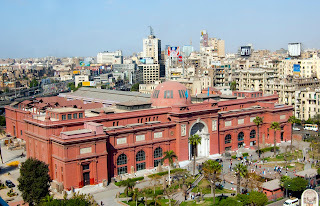The Sultan al-Nasir Muhammad ibn Qala'un Mosque is an early 14th century mosque at the Citadel in Cairo, Egypt. It was built by the Mamluk sultan Al-Nasr Muhammad in 1318 as the royal mosque of the Citadel, where the sultans of Cairo performed their Friday prayers.
The Sultan also built a religious complex in the center of the city, next to the one by his father Qalawun.
There are two minarets,
both built entirely of stone, one at the northeast corner and one at
the northwest portal right above the main entrance; the former is the
higher of the two. The top of the latter is unique in Cairo in that it
has a garlic-shaped bulb.
In the 1335 renovation, the mosque was heightened, its roof rebuilt and a
dome of plastered wood covered with green tiles was added over the maqsura
(prayer niche). For centuries the Qala'un Mosque was considered the
most glamorous mosque in Cairo until the dome over the prayer niche
collapsed in the sixteenth century and the high marble dado was carried off to Istanbul by the Ottoman conqueror Sultan Selim I. The present dome is modern, carried by granite columns taken from ancient Egyptian temples.



















